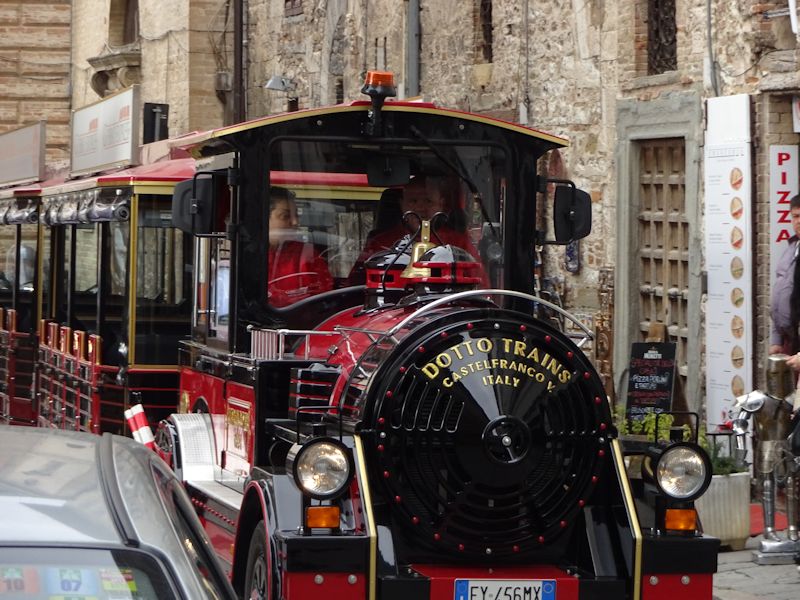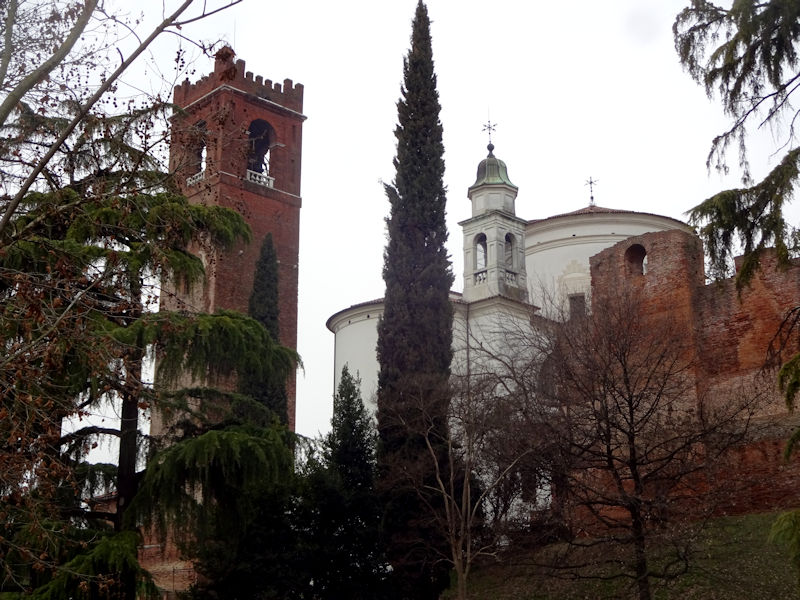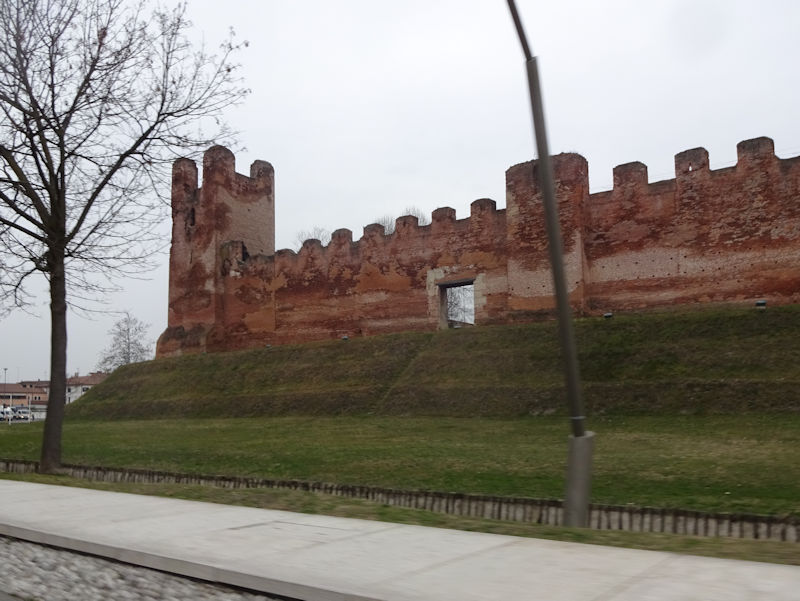You may not find this terribly rewarding unless you're included here, so this is a good time for casual and random browsers to turn back before they get too caught up in the sweep and majesty of the proceedings and can't let go.
Lunch in Castelfranco Veneto

Parking our cute little silver Volvo, 28 February 2017, on the Piazza Giorgione at the northern end of the centro storico of Castelfranco Veneto, with grey rain dampening an otherwise festive street market.
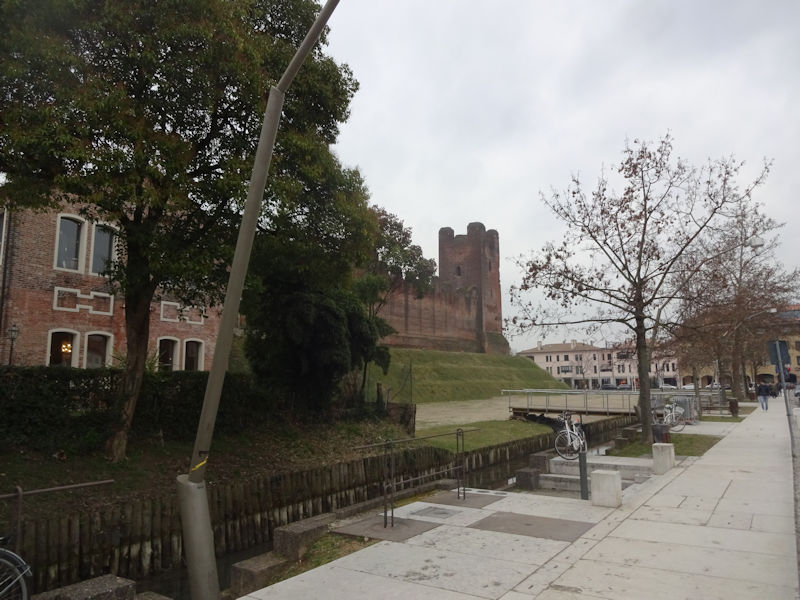
Castelfranco, about halfway along our short drive to Treviso 30km farther on, was built as a military fortress by the Trevisans, begun in about 1195-1199 and completed by 1218, to safeguard their western frontier in their long struggle against Padua (Padua responded by building its own fortress, in 1220-1222, the present town of Cittadella, 11km to the west of here).

The old town of Castelfranco, within the original city walls, is still bounded by a moat (on this side of town, with actual water in it). The name indicates that the castle and its dependents were 'franked' or exempt from certain taxes and duties and that it could hold grain and livestock markets.

We're processing down the north-south thoroughfare, Garibaldi Street naturally, towards the Duomo. The fortress, still walled all round, is formed in a square of about 250m on a side, so we needn't hurry.
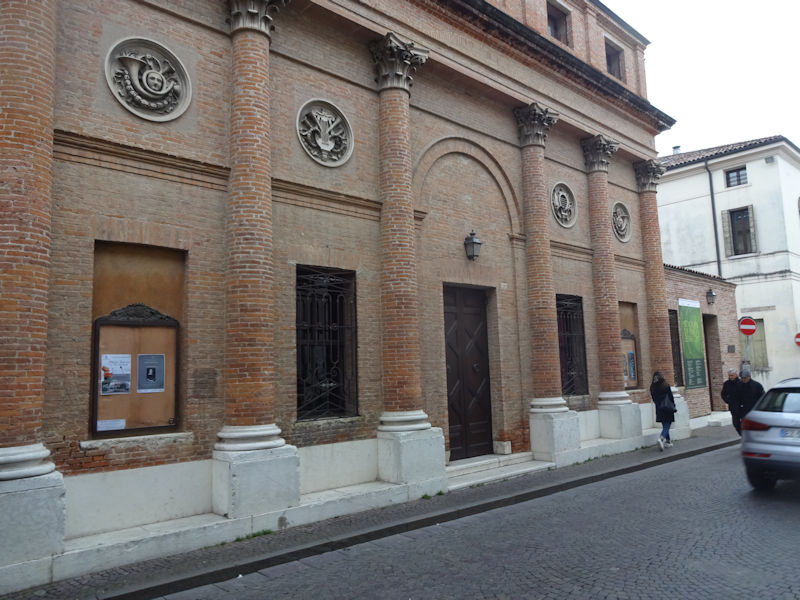
We're passing the Teatro Accademico, designed by local boy F. M. Preti in 1754 and opened to the public in 1758. It ceased productions in 1910 but, according to the information panel out front, since 1945 it has served as a library, concert hall for the musical conservatory, and meeting place of the Università Popolare, or Popular University, of Castelfranco.

The east-west thoroughfare, looking westward to the Cittadella Gate
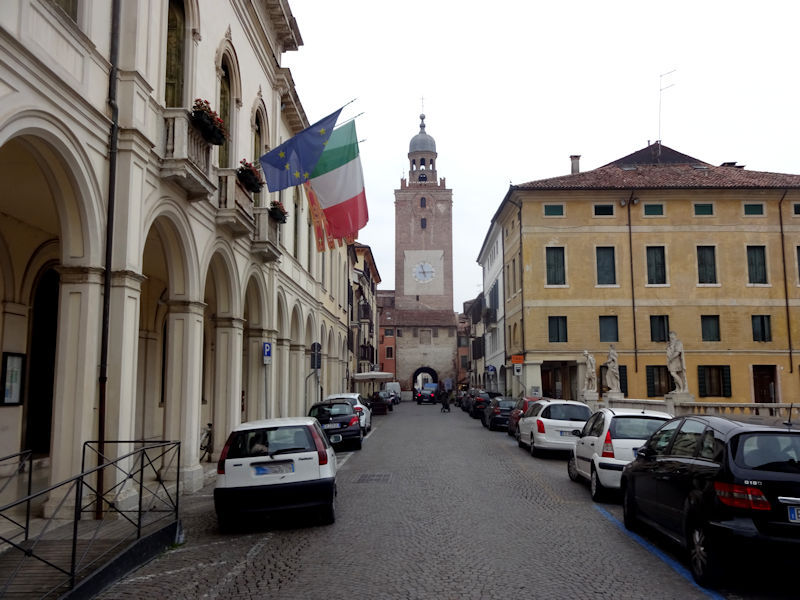
And eastward to the Treviso Gate and tower. Not long after its foundation, Castelfranco was captured by Ezzelino III da Romano, 'il tiranno', in 1246, but came back to Treviso after his death in 1259. Cangrande della Scala, Lord of Verona, captured Castelfranco on his way to his successful siege of Treviso in July 1329, but in 1339 the city, with Treviso, turned itself over to Venice and remained, except for a brief period in the 1380s under Francesco I da Carrara's Padua, under Venetian authority until Napoleon showed up in 1797.

The Torre Civica or Civic Tower, evidently ordered up by Ezzelino III da Romano and his brother Alberico during their brief tenure here, then strengthened by the Venetians
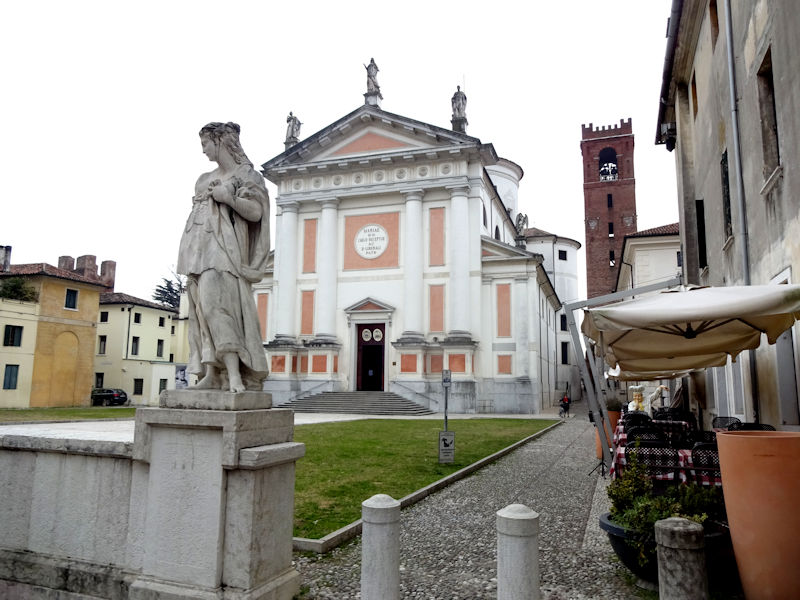
The Duomo di Castelfranco. There was a Romanesque Santa Maria Assunta here, but it was knocked down to clear the ground for this valiant neoclassical effort designed by F. M. Preti (who also designed the Teatro Accademico above) beginning in 1723 and opened in 1746.
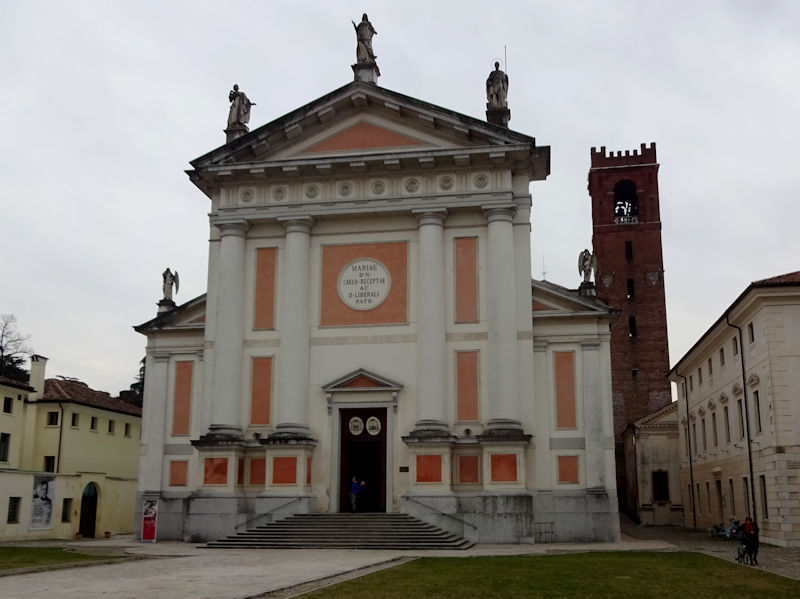
The current façade, however, dates from 1893. No surprises there, though the bell tower is evidently much older. The Piazza San Liberale is named for St Liberalis of Treviso, supposedly a 4th century priest from Altinum, an ancient city on the northern Venetian lagoons, who was venerated for apparently no discernible reason, other than that he hated the Arian 'heretics'. He is the patron saint of Treviso, where his remains had been transported to save them from either Huns or Lombards, and was stuck on as patron here as well when the Trevisans created this fortress ca. 1199.

Overwhelmed
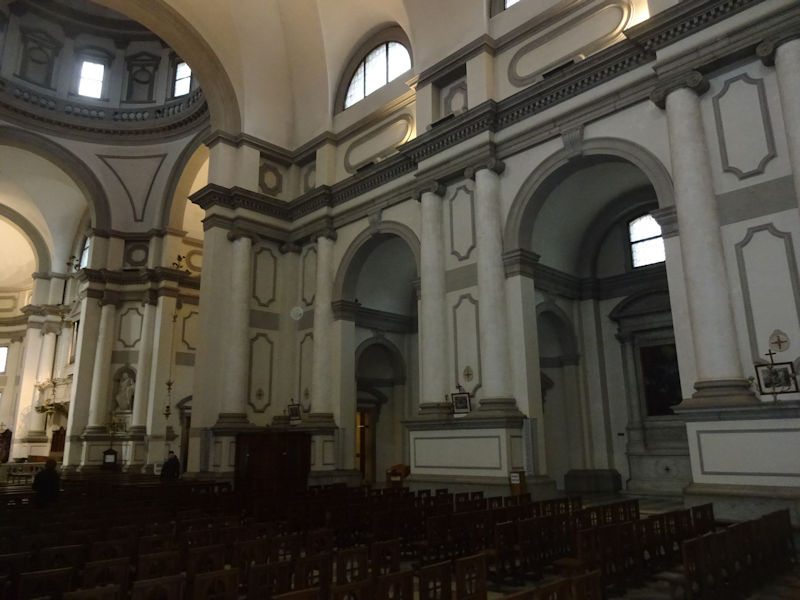
There are different realms of aesthetics in church appreciation, and this isn't one of ours, unfortunately.
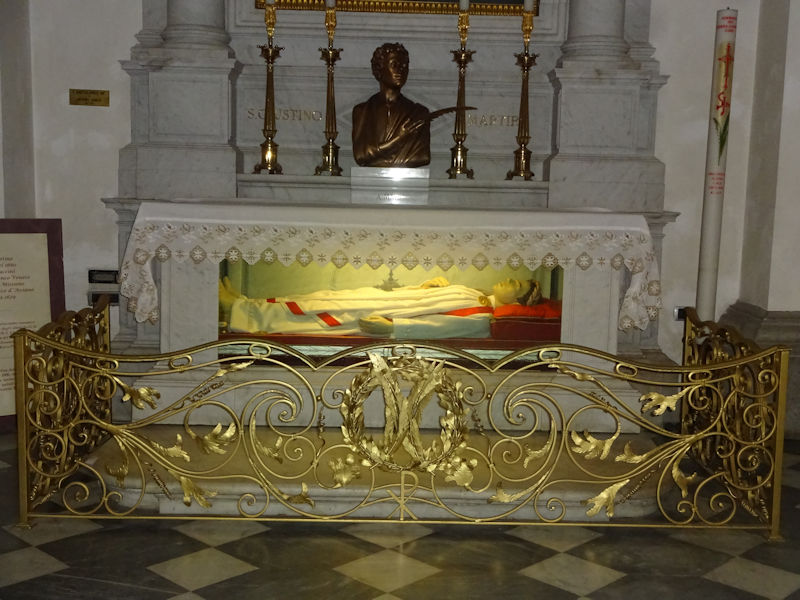
The information panel seems to be saying (in Italian) that this is the body of Justin Martyr (martire Giustino), the 2nd century saint from Nablus, recovered from the Roman catacombs and donated to the city of Castelfranco Veneto in 1680. [If that's the same Justin Martyr, churches in Rome and Malta have also filed their own claims.] In any case, he looks in pretty good condition, in my view.

An insistent side chapel
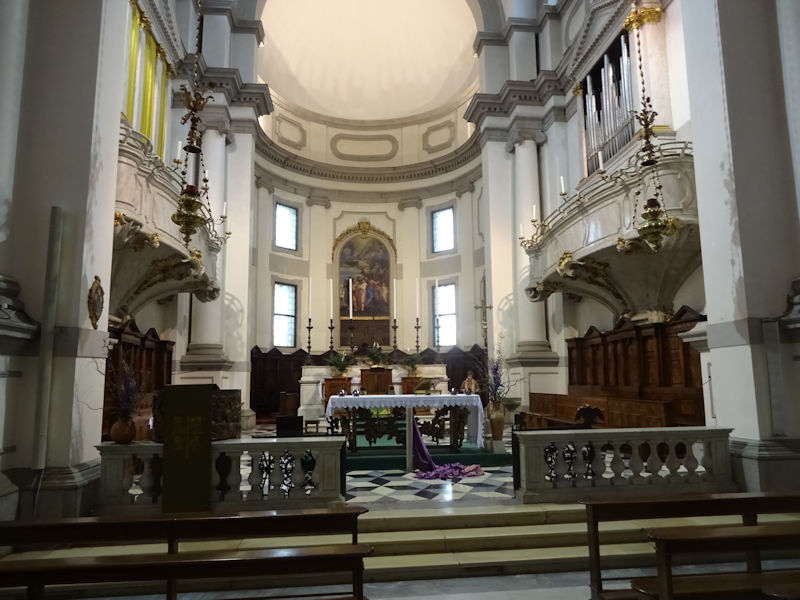
The high altar, with a picture of Christ's Descent into Limbo by the 16th century Venetian Giambattista Ponchino (aka Bozzato) that we can't get anywhere near to get a look at it. There are a number of other works worth visiting (including some frescoes by Veronese) but they're kept in the sacristy, which serves as the town's pinacoteca, closed today.

But that's okay, because in one of the side chapels is the pièce de résistance, the altarpiece 'Madonna and Child with St. Francis and St. Nicasius' (aka the Castelfranco Madonna) by Giorgione, dated about 1504 -- it was stolen in 1972 but recovered, and restored. St Nicasius was a Sicilian Crusader of the Knights Hospitaller who is said to have been captured at the catastrophic Battle of Hattin in 1187 and beheaded by Saladin for refusing to convert to Islam -- the work was commissioned by the condottiere Tuzio Costanzo, who had moved to Castelfranco in 1475 after having served Queen Caterina Cornaro in Cyprus.
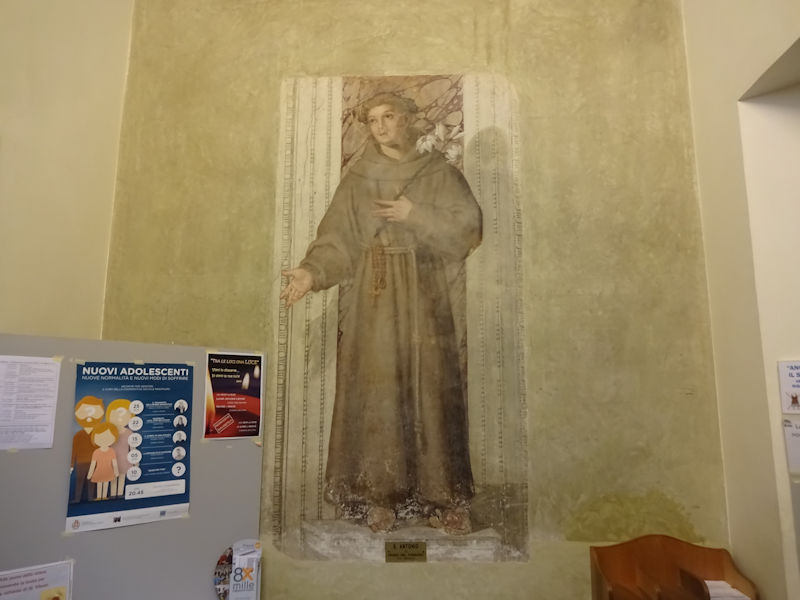
St Anthony (16th century). A fair number of frescoes were carried over from the old church and installed in the 18th century edition.

Across the Piazza San Liberale from the Duomo, that's the municipal building, built in 1879/80 on the site of the 15th century Palace of the Podestà.
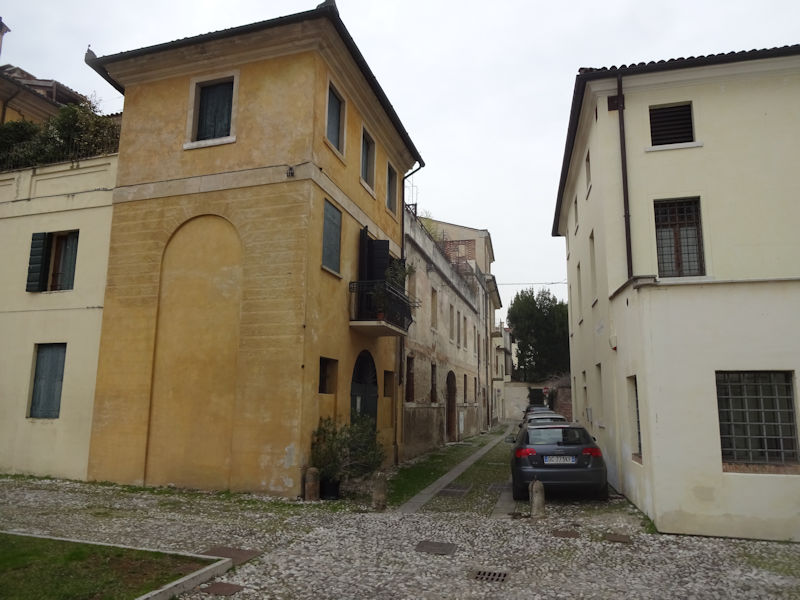
Alongside the Duomo, this leads to the former Casa Marta-Pellizzari, now (since its inauguration in 2009) reincarnated as the Museo Casa Giorgione -- a 14th century house, where evidently Giorgione worked as a youth, that has been thoroughly restored and equipped as an interesting exhibition about the history and domestic arrangements of the region in the 16th century, and to some extent about Giorgione himself.

Entering the Casa Giorgione

That, that, is a mermaid. The powerful Venetian family of Cornaro were active all over the region, and in the late 15th century Caterina Cornaro was married to James II Lusignan, King of Cyprus, a family that derived its origins from, yes, a beautiful mermaid named Melusine. Caterina Cornaro, the Queen of Cyprus, was given sanctuary and the fiefdom of Asolo, just up the road, in 1489, as we learnt yesterday.

A well-represented display of period artifacts, and the way to the loo.
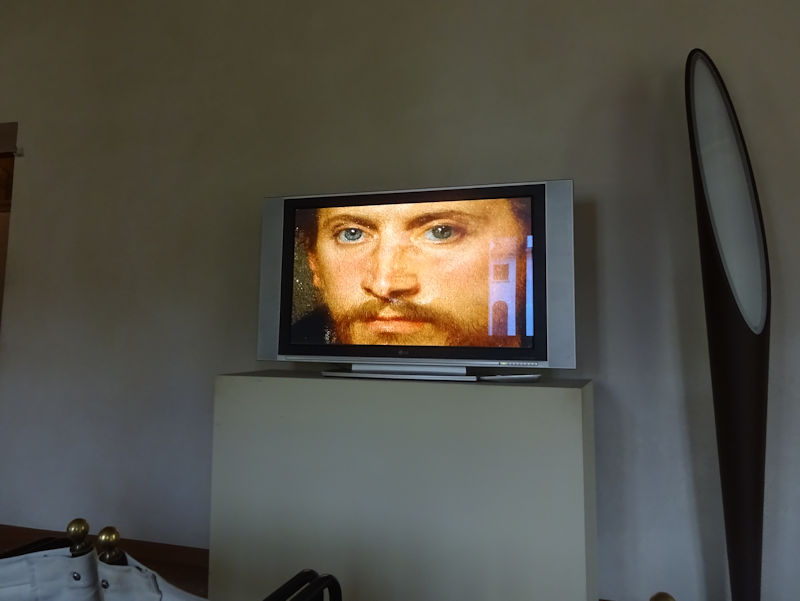
An audio-visual presentation of the life of Giorgione and the importance of his works. Giorgio Barbarelli da Castelfranco was born in about 1478 and apparently lived and worked in this house before going off to Venice, where he studied under Giovanni Bellini and may have roomed with Titian in Bellini's house. Subsequently he and Titian were instrumental in creating a 'Venetian school' that emphasized mood and color and introduced landscape into the backgrounds of their paintings. He died, probably of the plague, by October 1510, when Isabella d'Este, the Marchesa of Mantua, asked a Venetian friend to acquire a Giorgione painting for her in terms that indicate that she had already learnt of his death.

Not very many of Giorgione's works survive, but amongst them, in addition to the Castelfranco Madonna in the Duomo, there is this youthful frieze of the 'liberal and mechanical arts'.

Some other frescoes (not by Giorgione) in the house

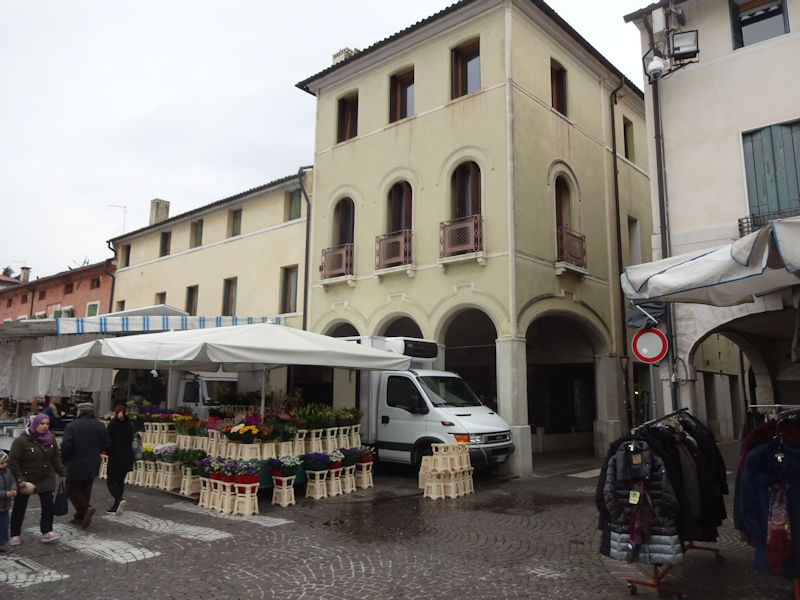
Back to the street market (to be sure we haven't missed anything)

The Piazza Giorgione originally included the city's livestock market, among other things; pigs and cows were kept down at one end, to spare the upper-income residents of the palaces along the eastern end from offensive odors.
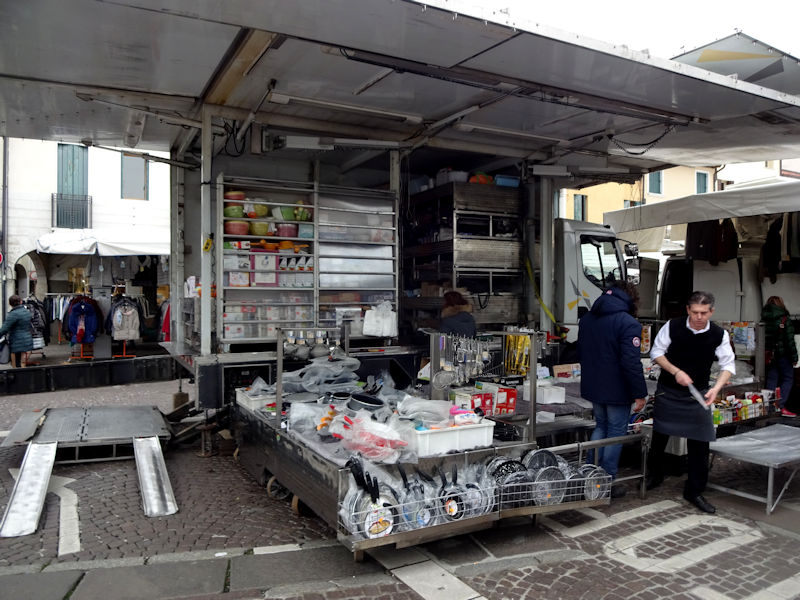
An ingenious machine

A little mall nearby, north of the Piazza Giorgione

Bargains
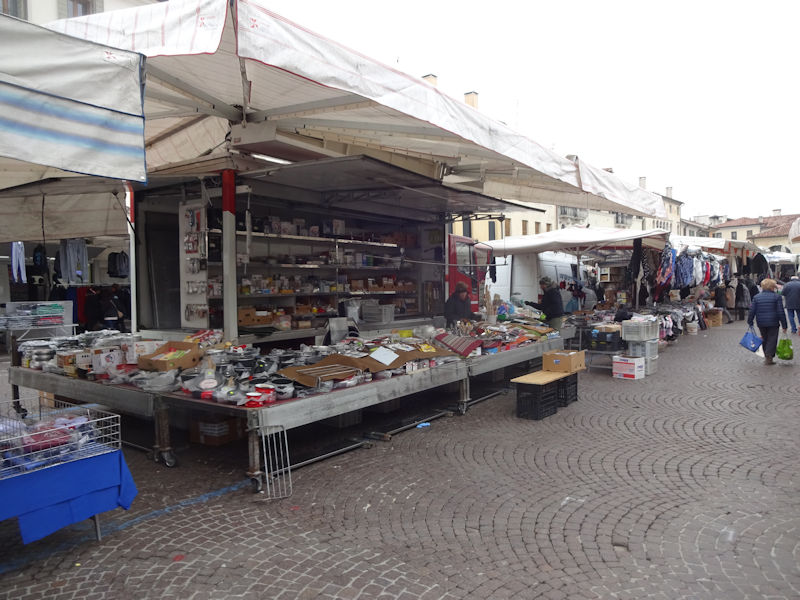
Market trucks you could comfortably live in
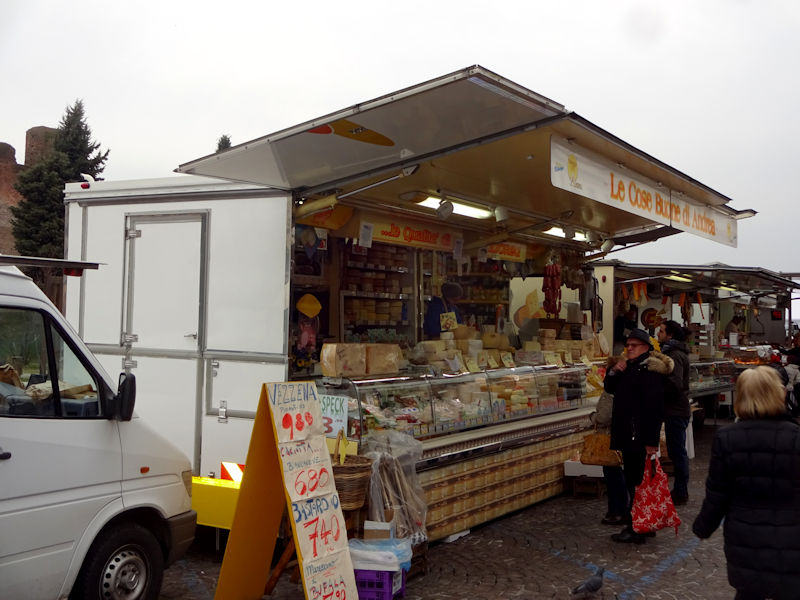
Yum
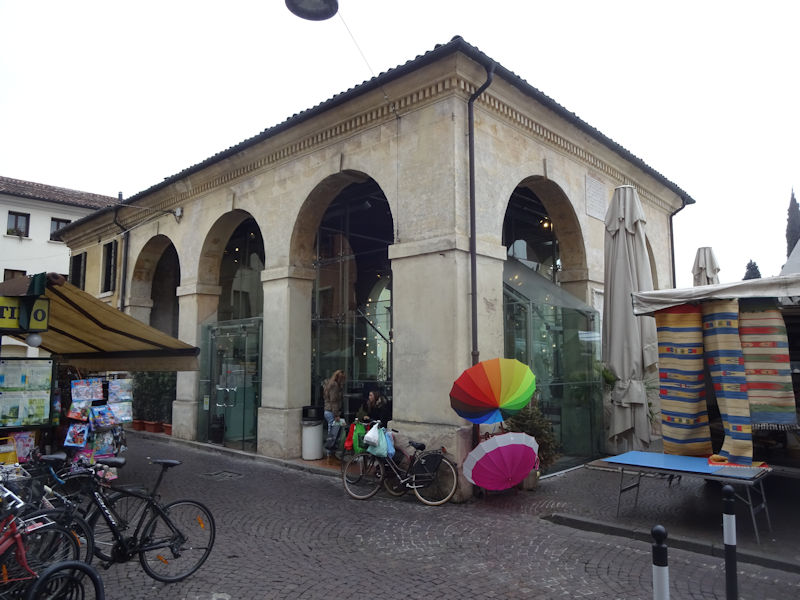
The Bar Borsa café, in the piazza's renovated Loggia dei Grani since 1992, the historical grain market and exchange, was built by the Venetians in 1420 to oversee the market square.

Contemporary art

Down the Corso 29 Aprile (commemorating the arrival of Allied troops in 1945), there is a row of substantial houses, called the Bastia Vecchio, which were built early on to protect from attackers the borgo that had grown up outside the main gate.

The northeast corner tower with its statue of Giorgione, erected in 1878 on the 400th anniversary of the artist's birth (more or less)

During the transformation of Castelfranco for modern tourism, this statue to Giorgione was added by Augusto Benvenuti in 1878 (and the Market Square was renamed the Piazza Giorgione).

The State Conservatory of Music "Agostino Steffani"

The city walls near the Cittadella or western gate
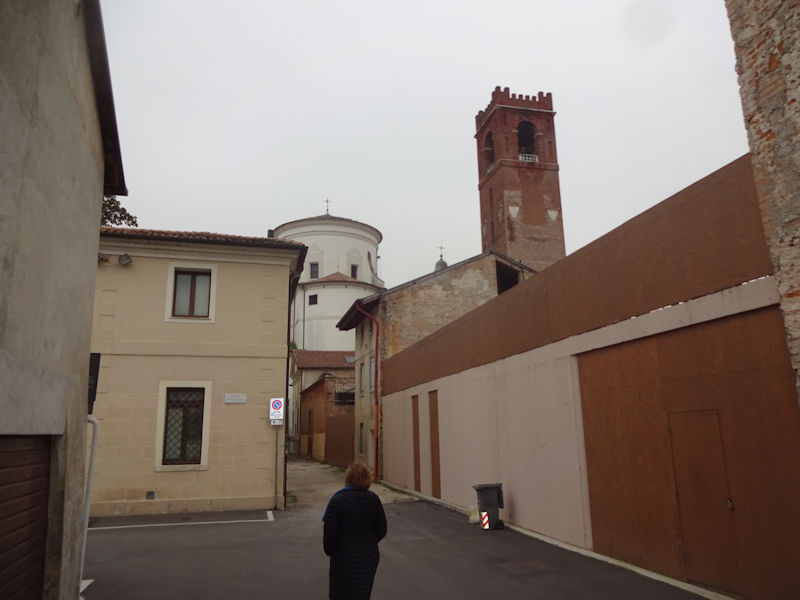

Back to the Piazza San Liberale; time for lunch . . .
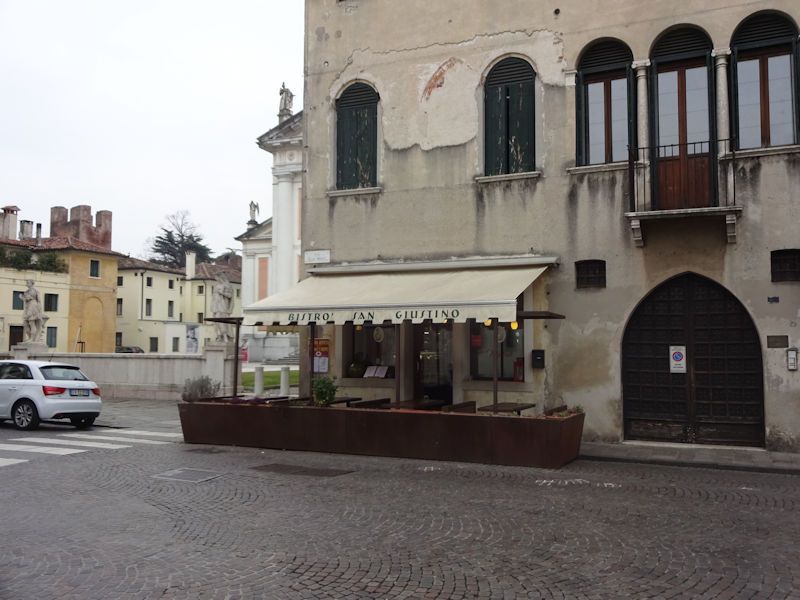
. . . in the Bistro San Giustino

A statue of . . . of . . . erm.

The Civic Tower
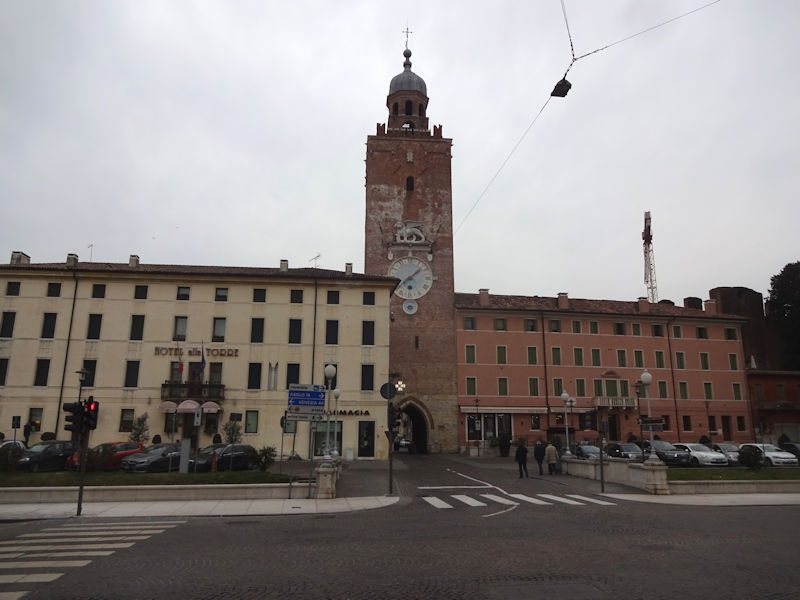
The Civic Tower over the Treviso Gate, with its Winged Lion above the clock, from 1499, commemorating the Venetian bosses

The Corso 29 Aprile outside the Treviso Gate

At the southeastern corner of the castle, the moat meets the Musonello canal joining it to the Muson River. But catastrophe! directly down that road across the way, 500m down the Borgo Pieve . . .

















































